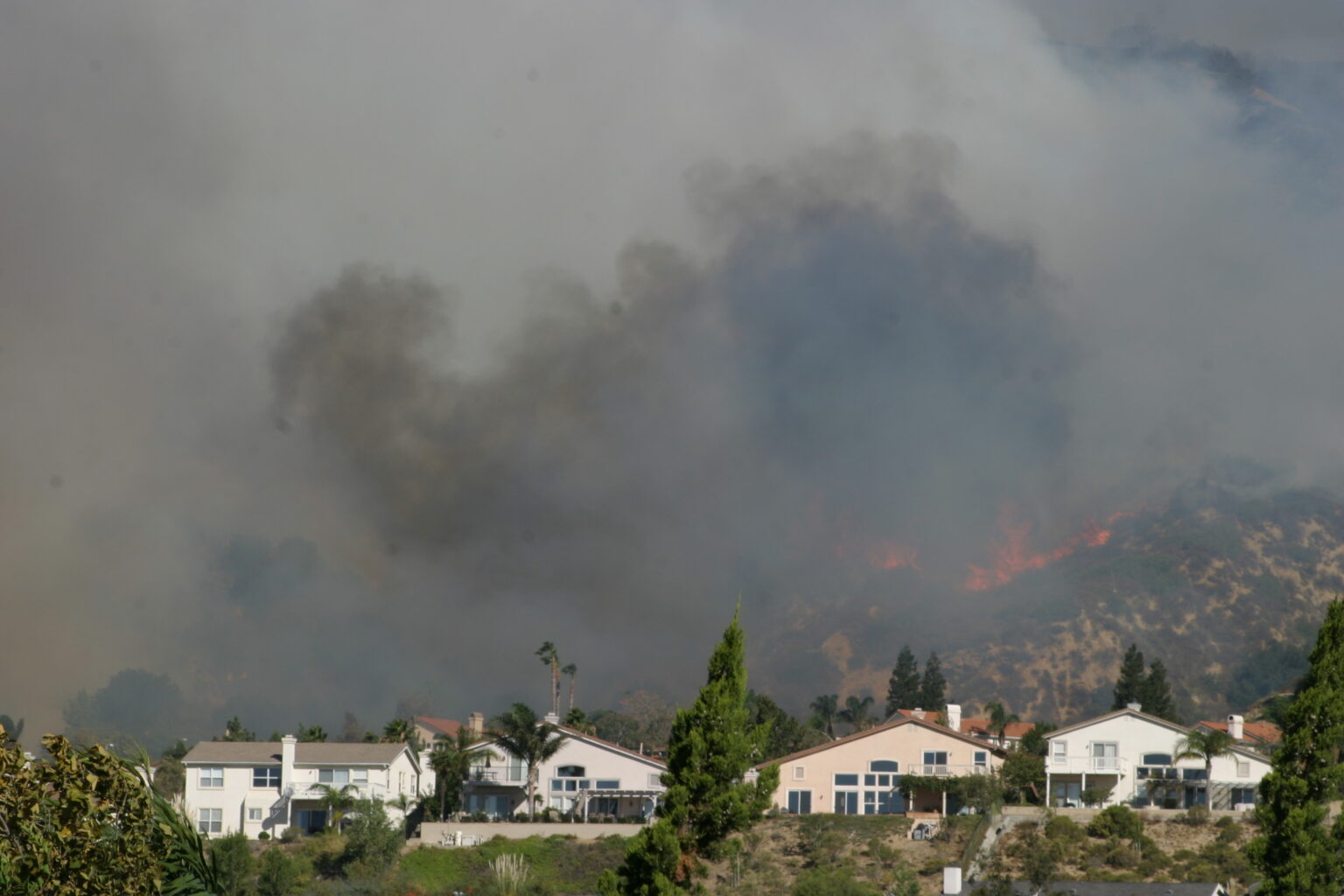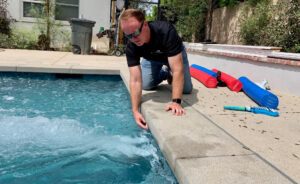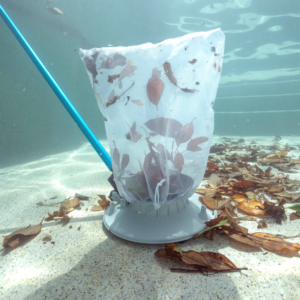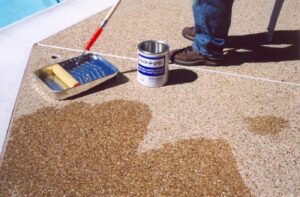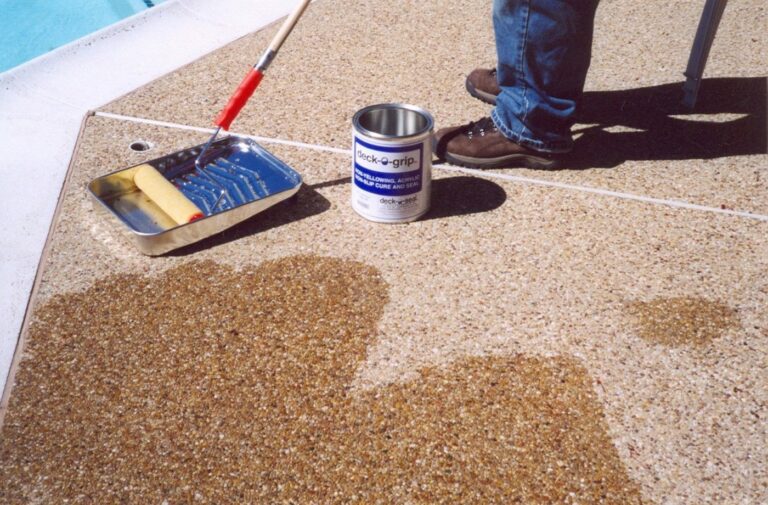The devastating effects of wildfires are felt far and wide, from the destruction of homes and ecosystems to the decline in air quality. However, one often-overlooked consequence of wildfires is their impact on pool and hot tub water chemistry. Here is a breakdown of the complex ways in which wildfires can affect the water chemistry of pools and hot tubs.
Particulate Matter and Air Quality
Wildfires emit an array of pollutants into the atmosphere, including particulate matter, carbon monoxide, and volatile organic compounds. These airborne particles are not only harmful to human health but can also infiltrate pool and hot tub water. Particulate matter in the form of ash and soot can settle on the water’s surface, leading to a series of water chemistry challenges.
Homeowners should be diligent about keeping pool covers on during wildfire events to minimize the introduction of particulate matter into the water.
pH Levels and Alkalinity
Wildfire ash often contains alkaline substances such as calcium carbonate. When ash settles into pool or hot tub water, it can lead to an increase in pH levels and total alkalinity. Elevated pH and alkalinity can cause water to become cloudy, scale formation on pool surfaces, and interfere with the effectiveness of chlorine sanitization.
As such, it is advised that pool and spa owners regularly test and adjust pH and alkalinity levels during and after wildfire events. The use of pH reducers, such as sodium bisulfate also known as dry acid, may be necessary to bring the water back into the desired range. Sodium bisulfate is a valuable tool in the pool and hot tub industry for maintaining proper water chemistry. It serves as an effective means of lowering pH levels to ensure water balance, optimize chlorine efficiency, and prevent issues like scaling and cloudy water. Of course, testing accuracy and chemical quality are key to restoring and maintaining water balance.
AquaChek® is the trusted brand for easy and reliable pool and spa water testing. Their top-of-the-line test strips and meters offer a quick and accurate solution for checking water chemistry. AquaChek Select Connect is their most comprehensive test kit for ensuring water quality. Complete with a helpful guide to pool treatment, Select Connect analyzes Total Hardness, Total Chlorine, Total Bromine, Free Chlorine, pH, Total Alkalinity, and Stabilizer.
And with their free, user-friendly app, pool owners can digitally scan the test strip using innovative photo capture technology and receive personalized water treatment recommendations instantly, without registration.
GLB™ pH Down, also known as “dry acid” or sodium bisulfate, is the solution to restoring and maintaining the ideal pH level. With this powerful product, pool owners can prevent staining, scaling, and clouding of the pool water. By keeping pH in the proper range, sanitizers work more efficiently. It’s an essential step in maximizing the lifespan of the pool equipment. pH Down is compatible with chlorine, bromine, ozone, biguanide sanitizers, and salt water pools.
Water Clarity and Turbidity
As wildfire-induced ash and soot settle into pool and hot tub water, they can lead to water turbidity, making it cloudy and visually unappealing. Turbid water not only affects the aesthetic appeal of the pool or hot tub but can also be an indicator of compromised water quality.
To mitigate this issue, flocculants or clarifiers can be used to help particles in the water clump together for easier removal through filtration.
Applied Biochemists® Gold-N-Clear™ Clarifier includes a unique color-changing feature. When added to a pool, it transforms from gold to blue as it clears the water. By absorbing small particles that cause cloudiness, Gold-N-Clear leaves the pool looking pristine.
Gold-N-Clear is also safe for swimmers, allowing them to dive right in after application. The product is 100% biodegradable, non-toxic, and free from dyes or other additives and is compatible with chlorine, bromine, ozone, and biguanide.
Filters play a critical role in removing debris, particles, and contaminants from the water, ensuring that the water remains clean and clear. Running the filtration system will not only circulate stagnant water but also aid in distributing pool chemicals throughout the pool. In areas affected by wildfires, where the introduction of particulate matter and ash is a concern, filter maintenance becomes even more crucial.
Neglecting filter cleaning or backwashing can lead to reduced water flow, increased strain on the pool or hot tub’s pump, and a higher demand for chemical treatments to compensate for poor filtration. By adhering to a regular maintenance schedule for filter cleaning or backwashing, pool and hot tub owners can help ensure that their water remains crystal clear, safe, and free from unwanted contaminants.
FILBUR™ filters, made with the same level of excellence as OEM grade filters, offer exceptional filtration performance and capacity to effectively capture and retain fine particulate matter and ash. Designed with precision engineering and top-tier single layer trilobal media, FILBUR filters provide a robust defense against the influx of contaminants resulting from wildfires. Their ability to maintain superior filtration efficiency, even in challenging conditions, ensures that pool and hot tub water remains clear, safe, and free from unwanted debris and pollutants. This helps safeguard pool equipment and minimizes the demand for additional chemical treatments.
Chlorine Demand and Disinfection
The presence of organic matter in wildfire ash can lead to an increased demand for chlorine in pool and hot tub water. Organic contaminants consume free chlorine, leaving the water vulnerable to bacteria and algae growth. This increased chlorine demand can result in inadequate sanitization and create an environment conducive to waterborne illnesses.
During and after wildfires, pool and hot tub owners need to monitor chlorine levels closely and maintain higher-than-usual chlorine concentrations. Shock treatments may also be necessary to break down organic contaminants and restore effective disinfection.

Calcium Hardness and Scaling
The alkaline nature of wildfire ash can elevate the calcium hardness levels in pool and hot tub water. Elevated calcium hardness can lead to scaling on pool surfaces and equipment, such as heaters and pumps. This scaling not only affects the aesthetic appearance but can also impair the functionality of pool systems.
To combat scaling, regular water testing and adjustment of calcium hardness levels is necessary. The use of sequestering agents can help prevent calcium ions from precipitating out of solution and forming scale deposits.
Metal Contamination
Wildfires can introduce trace amounts of metals, such as copper and iron, into pool and hot tub water. These metals can have detrimental effects on water quality, causing discoloration, staining, and potential damage to pool equipment.
To address metal contamination, the use of metal sequestrants helps to prevent metals from reacting with other pool chemicals. Additionally, homeowners are advised to periodically test for metal concentrations and apply appropriate treatments when necessary.
Evaporation and Water Balance
Wildfires can also have indirect effects on pool and hot tub water chemistry through changes in weather patterns. The high temperatures and low humidity associated with wildfires can lead to increased evaporation rates, causing a concentration of dissolved solids in the water.
Regular monitoring of water balance parameters is crucial, including total dissolved solids (TDS) and calcium saturation index (CSI). Periodic dilution through partial water replacement may be necessary to maintain proper water balance.
Nutrient Load and Algae Growth
As mentioned, the influx of organic matter from wildfire ash can serve as a nutrient source for algae growth in pool and hot tub water. Algae blooms can result in green and slimy water, posing aesthetic and health concerns.
To prevent algae growth, regular brushing of pool surfaces is necessary. Proper filtration and circulation are also essential to keep the water moving and inhibit algae formation.
Wildfires have far-reaching consequences, and their impact on pool and hot tub water chemistry should not be underestimated. Pool and spa industry professionals play a crucial role in educating homeowners on the potential challenges posed by wildfires and providing them with the tools and knowledge to address these issues effectively.
At Alpha West, we are committed to showcasing the top-notch industry products and providing valuable knowledge and training on the superior options available in the market. Get in touch with us at hello@alphawest.com to learn more about the manufacturers we proudly represent. Or locate your local pool and spa manufacturer representative on our territories map.

